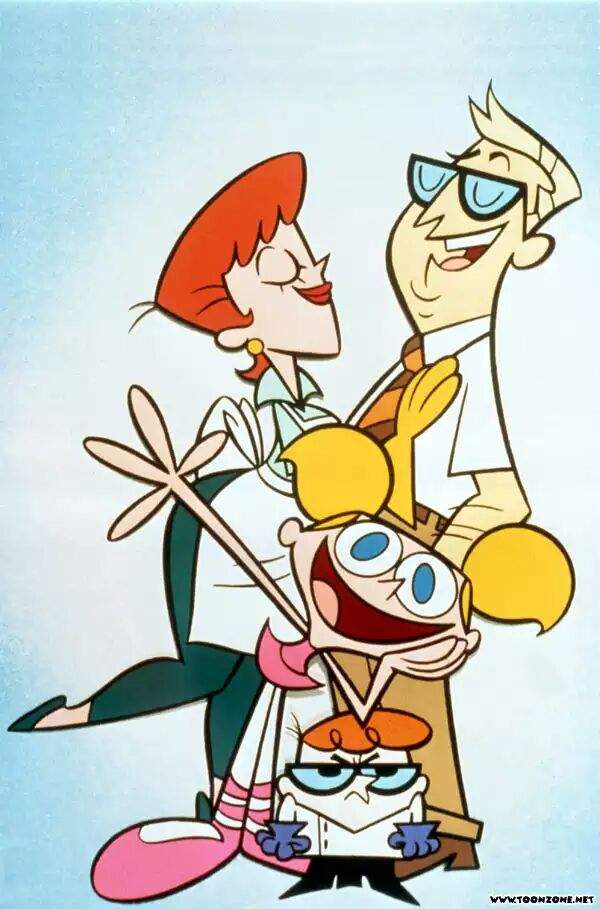


Rami, in particular, was a huge influence on the show’s visual style.

Among other notable filmmakers, both Sam Raimi and the Coen brothers - who are adept at telling a story without saying much - influenced the look and tone of Dexter's Lab, to the point where segments like "Dexter Dodgeball" directly quoted Bruce Campbell in Evil Dead 2.ĭexter’s Lab did more than just drop Evil Dead Easter eggs, though. Tartakovsky and his fellow creators found inspiration for their wildly creative children’s cartoon in some not exactly kid-friendly places. The show would constantly use fast editing to quickly cut from one scene to the next, skipping transitions and just focus on the visual impact and symbolism. "Whatever we could do to not have dialogue and tell more story, we did," McCracken says. The task, then, was to pack as much story as possible into these Quibi-sized chunks of animation. Episodes consisted of three 7-minute segments (though sometimes they'd be two 11-minute segments), so there's limited time to tell stories. Unlike things like Animaniacs, however, which focused on throwing as many homages and parodies at the audience as possible, Dexter actually had a unique style of visual storytelling that blended its many influences, rather than just copying them. We didn't know if we'd ever get another chance to make something like this."ĭexter's Lab had all those things, and more. "We better put everything we've ever wanted to put into a cartoon in these episodes," McCracken says. For McCracken, seeing John Kricfalusi get fired from Ren and Stimpy, a show he created for Nickelodeon, was a sort of wake-up call. Writer and director Craig McCracken, who joined the Dexter's Lab crew from the beginning, recalls the early '90s as a time where an animator couldn't count on ever being able to make their own show, and even those who did weren't guaranteed to last very long. These wild ideas were the result of a melting pot of influences not limited to animation. We're all creative people trying to find our voice." Getting the green light on Dexter's Lab was a test of sorts for Tartakovsky, who wanted to see if the wild ideas he had boiling in his mind had any merit. "I worked as a storyboard artist on 2 Stupid Dogs, and everything I did in storyboards, the producer hated," Tartakovsky tells SYFY WIRE.
#Dexters laboratory free
Right from the start, the idea of being fully in charge of a show, with free creative reins, allowed Tartakovsky to finally do everything he was never allowed to do by producers.
#Dexters laboratory series
The show, a result of a mishmash of influences ranging from Sergio Leone and Sam Raimi, to Tex Avery cartoons and anime, marked the start of a new era for Saturday Morning cartoons.įor Dexter’s Lab’s 25th anniversary, SYFY WIRE spoke with creator Genndy Tartakovsky, as well as animators and writers Craig McCracken, Rob Renzetti, and Butch Hartman, to unpack what made the series so special.
#Dexters laboratory full
The first of these shorts to get a greenlight and become a full series was Dexter's Lab, a show about a boy genius named Dexter and his sister Dee Dee who always wrecks his experiments, created by Genndy Tartakovsky, a newcomer with only four years of experience doing animation for projects such as Batman: The Animated Series. In 1995, under the leadership of Fred Seibert, Cartoon Network launched What a Cartoon!, a series of animated shorts that essentially served as an incubator for creator-driven cartoons. It was a little show called Dexter's Laboratorythat made the network into an animation powerhouse. The medium's next "eureka moment" came shortly after, when Cartoon Network began making original cartoons of its own rather than simply rerunning old classics. That started to change in the '90s when Nickelodeon began making creator-driven shows.

Despite lots of nostalgic highlights, American animation during the '70s and '80s was mostly driven by a desire to sell toys rather than by creativity.


 0 kommentar(er)
0 kommentar(er)
